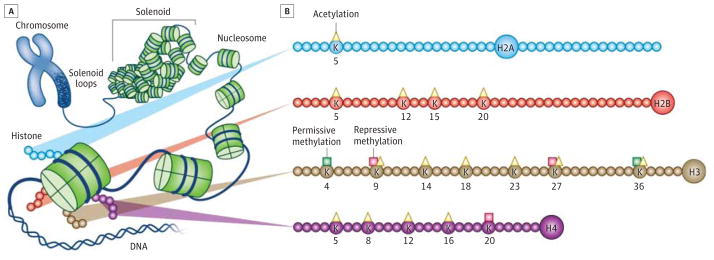Figure. Chromatin Structure and Histone Modifications at N-Terminal Histone Tails.

A, The eukaryotic genome is organized by wrapping DNA around histone octamers to form the basic units of chromatin, nucleosomes, which are then further organized and compacted into higher-ordered structures. B, The histone octamer consists of 2 copies each of H2A, H2B, H3, and H4. In addition to globular domains, they each have N-termini tails that protrude from the nucleosome, while H2A also has a C-terminal tail. These tails can be posttranslationally modified, and major forms of mammalian acetylation and methylation modifications on lysine residues on each tail are highlighted. The molecules are drawn approximately proportional to the size of the protein, although the number of residues shown is not meant to reflect the exact size of the N-terminal tails. This image was published in Sun HS, Kennedy PJ, Nestler EJ. Epigenetics of the depressed brain: role of histone acetylation and methylation. Neuropsychopharmacology Rev. 2013;38:124-137. The author retains the copyright.
